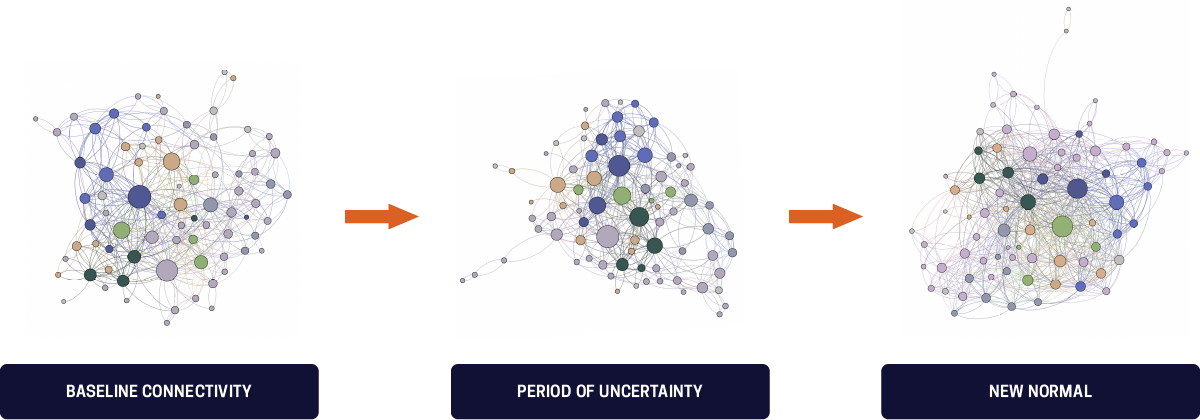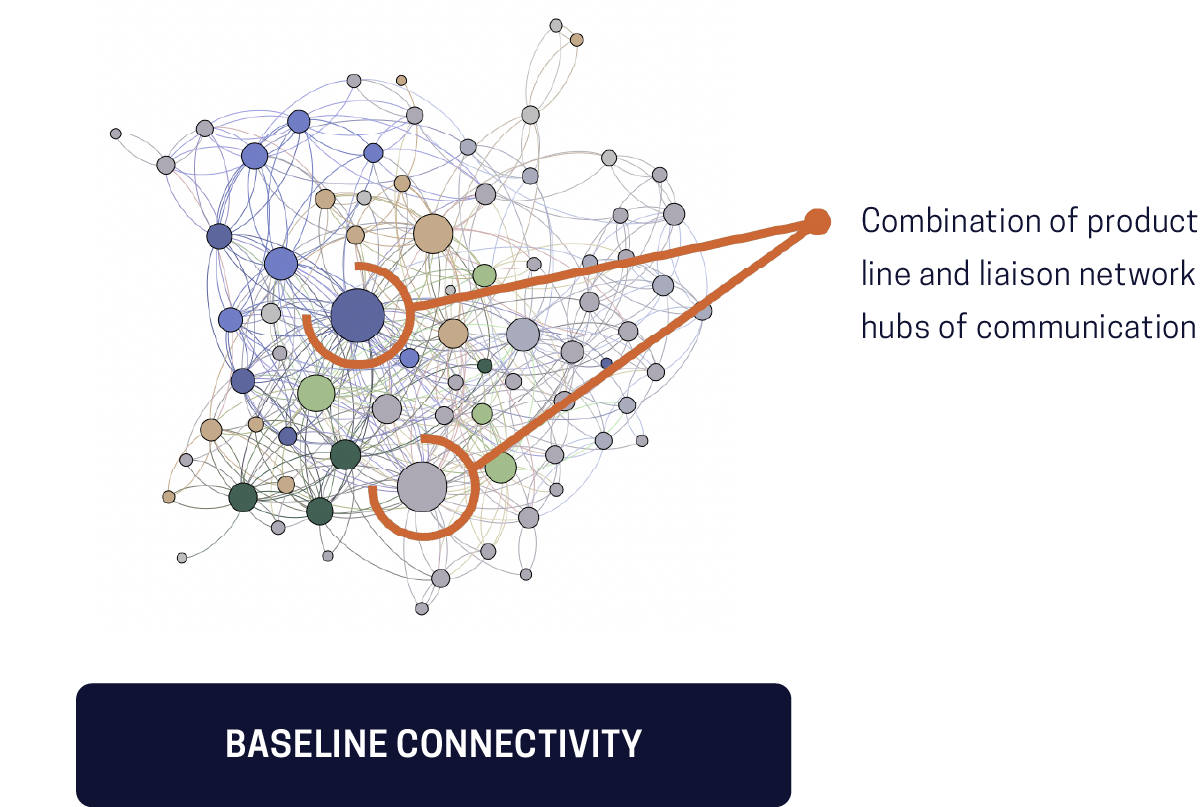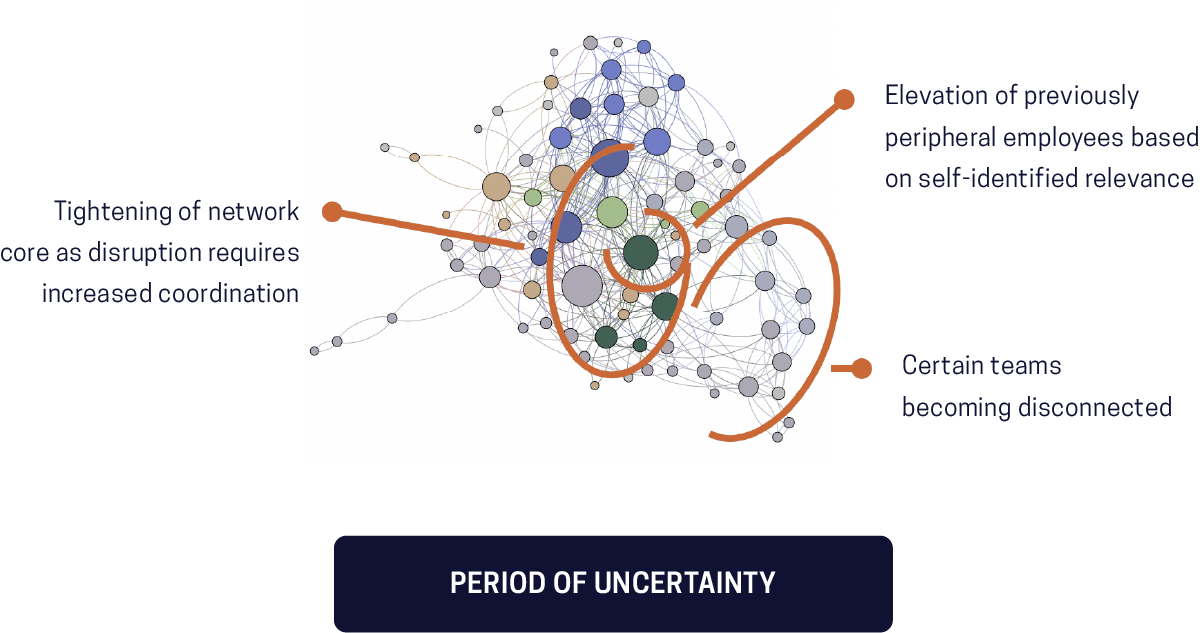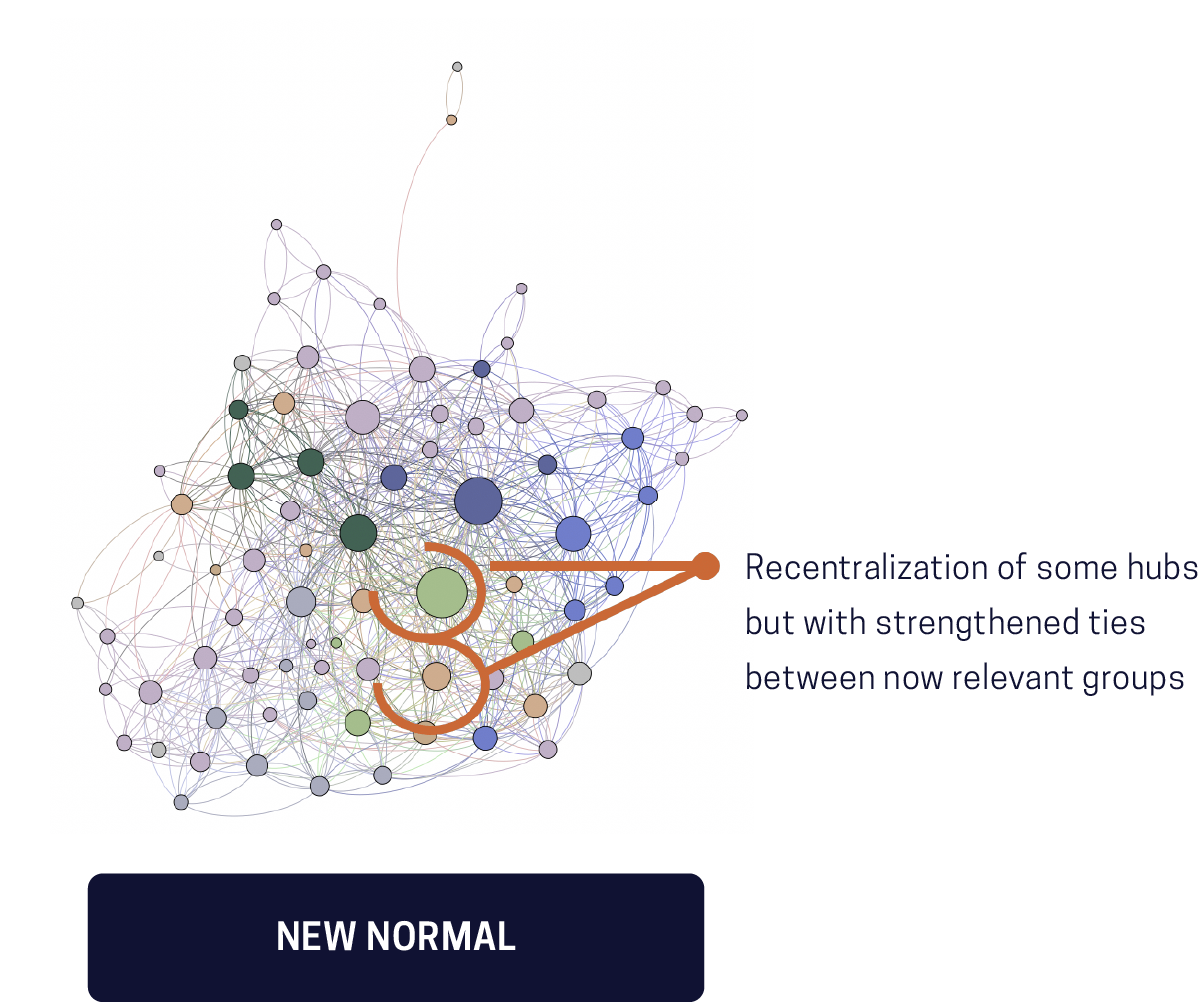By building a highly resilient network, an organization can position itself to rapidly adapt to disruption. McChrystal Group recently worked with a professional services organization to monitor its network’s response to disruption, which provides a case study for the steps other organizations can take.
Over the past year, the world has faced unprecedented disruption. Organizations have responded with varying degrees of success. A key determinant of that success has been the resiliency of not only their individuals, but also the connections between teammates.
McChrystal Group partnered with one such organization, “the company,” tracking how their work to build a highly resilient network allowed them to rapidly respond to disruption brought by COVID-19. The company provides us valuable lessons about the steps our organizations can take to better prepare our networks for disruption, as well as the ways we can react when that next crisis inevitably hits.
Do you have “go-to” people in your network you rely on? Most people and companies have those designated coworkers, turning to them based on gut instinct or experience. McChrystal Group regards these “go-to” employees as “network influencers,” or teammates the entire company relies upon for organizational success.
The company took a scientific view of these network influencers, engaging McChrystal Group’s network analysis practitioners and passive data systems to rigorously understand influence within the organization and track changes over time.
This is what our network analysis practitioners found.

Step 1: Identify the key changes in the environment and align key influencers on how to react

As you can see in the baseline connectivity chart, before the disruption began, the company combined a mixture of formal structure and more informal liaison networks. In periods of relative stability, this allowed the organization to balance efficient communications, clear decision-making authority, and reduce redundant communication.
As COVID-19’s disruption to the organization and wider environment became clear, the company identified important changes to their business. At the start of the pandemic, the organization had become too reliant upon a few key influencers, bogging those individuals down and failing to leverage others. As previously centrally located employees became remote, these key influencers also found themselves inundated in virtual meetings and calls, often stretching working hours and leaving less time to address the actual work to be done. The company knew it had to address these challenges to succeed.
Because the company’s leadership had set and maintained a clear north star, they already knew the answer to the question, “What are we trying to do?” and could instead focus their efforts on, “How are we going to do it?”
The company had another advantage – their network analysis had already shown the different roles their teammates played within the organization. Leadership already knew who the key connectors were, the key brokers of information, and the key champions throughout their team. As a result, they knew exactly whom they needed to align on next steps and those people they could lean on to drive the progress.
Step 2: Tighten the connections between the key influencers, identify new critical voices, and leverage both to navigate the period of uncertainty

Once the company aligned its key players, what did they need next? More regular and disciplined communication between key cross-functional stakeholders. To address this, the company changed its communication patterns and operating rhythm, relying much more heavily on its intra-departmental liaison networks, and less so on its formal product line structure. The organization shifted the focus and frequency of their major forums, aligning communication around emergent needs and elevating relevant voices.
As we can see in the network diagram of this period, the company’s core became much more connected during this period, as the team spent more time coordinating an aligned response to the rapidly evolving situation. Additionally, individuals who were previously less influential were elevated due to their relevant expertise. Because the organization had focused on building trust, employees felt encouraged to voice up, raising new ideas and self-identifying their expertise to improve their overall response.
The company had to be careful, though – look at the group of light blue and pink employees at the bottom right of the map. A non-negligible cluster of the organization had been isolated from the greater core. Even though the company’s overall response was strong, it had to adjust its structure and operating rhythm to reintegrate this group. Without dynamic data on the state of the network, the company might not have caught this challenge until it was too late and the group would have been executing in a vacuum without the guidance and context of the larger company. Instead, it was able to proactively reincorporate a key influencer within this group and establish more 1:1s with others to successfully maintain cohesion. The “new normal” chart below illustrates this improvement.
Step 3: Adjust the baseline for the “New Normal”

The company shifted more rapidly and organically than it would have had it undertaken a more top-down and formal restructure. As both the disruption and the organization’s response continued to evolve, the company was able to quickly adapt both its network and its structure to the “new normal.” Certain groups that required the most rapid responses remained tightly linked, while others were allowed to ingest information from the rapid response groups and renew their focus on less impacted activities.
Ultimately, the actions the company took before the disruption was on even on the horizon allowed it to persevere in the midst of crisis.



